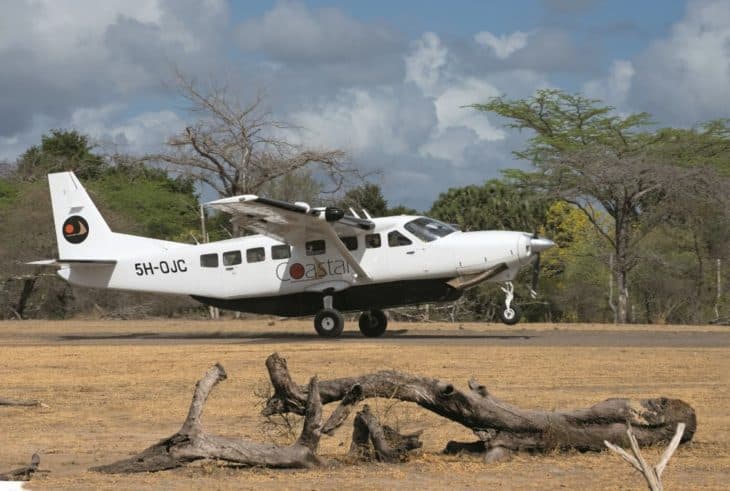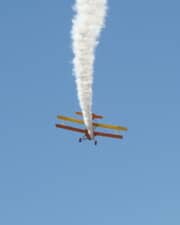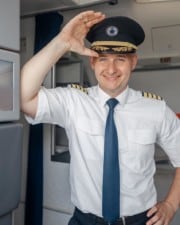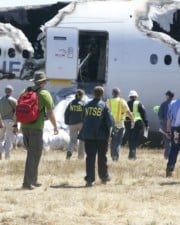Aircraft, just like cars or boats, need maintenance and may even break down occasionally. When they do, they need to be moved back to their base for maintenance. Since these flights are generally different from what the plane does typically, pilots and crews have different ways to refer to them.
What is a Ferry Flight?
A ferry flight is a non-revenue flight used to move an aircraft from one position to another. The term “ferry flight” is usually specially reserved for maintenance, new aircraft deliveries from the factory, or flights operated under an FAA Special Flight Permit. Airlines moving planes around for schedules purposes is usually referred to as a “positioning flight.”
There’s no one clear definition for the term “ferry flight.” Yet, it is a phrase that is widely used in the aviation industry. Ferry flights refer to repositioning flights where the airplane is being moved for non-revenue purposes. The term “ferry flight” is most commonly associated with general aviation (GA).
The term loosely comes from the FAA regulations. The Federal Aviation Regulations (FARs) are pretty strict about when aircraft can and can’t fly when it comes to the maintenance that they have to have completed.
What is a Positioning Flight?
A positioning flight is an airline term for moving a plane from one point to another for a purpose other than to carry paying passengers. It could be because the plane needs to be moved back to a base for maintenance or repairs, or it could just be because the flight ended in a different city than from when its next scheduled route begins.
Besides airplanes, crew such as pilots and flight attendants also have to be positioned. In aviation this is called deadheading.
Can passengers or cargo be carried on ferry flights?
Ferry flights come in all different shapes and sizes depending on what sort of airplane is being moved. Whether or not passengers or cargo can be carried during ferry or repositioning flights depends on the aircraft’s operator and the pilot in command.
If the plane is overdue for maintenance and has had to request a special flight permit from the FAA, then passengers or cargo cannot be carried. If, however, the plane is simply moving to another base for scheduled maintenance, then it might be possible if the pilot and the company allow for it.
For example, if a plane that is owned and operated by an FAA-certified Part 121 scheduled airline is being repositioned, it may not be flying between airports approved by the operator’s certificate. If the company needs to move the plane anyway, it can still fly under FAR Part 91 as a general operation. If that’s the case, no paying passengers or cargo could be carried.
But what if the repositioning flight is scheduled and part of the airline’s regular rotation of aircraft? In that case, a savvy scheduler could work the flight into the airline’s schedule and book seats. It would then appear just like a regular flight, and the airline even makes a little money on it (even though the plane is going to fly with or without passengers).
Many other considerations get weighed by the airline management team to figure out when and how to reposition airplanes to best fit their scheduling and maintenance needs. This is just a peek into how the work through these decisions. The decisions, scheduling, and regulations are similar for Part 121 (scheduled air carriers) and Part 135 (non-scheduled charter carriers), both passenger and cargo.
Maintenance Requirements and Airworthiness
Examples of required maintenance include annual inspections. Once every calendar year, the airframe, engine, and installed equipment must be inspected and found in good condition by an aviation mechanic. If the plane is operated for hire, then it must also be inspected every 100 flight hours.
There is also certain equipment that must be operational for a plane to fly legally. The exact list depends on the type of flying the pilot wants to do, be it day VFR, night VFR, or IFR. The FARs contains a list of “must-have” items that need to be in the plane and operational. The complete list can be found in FAR Part 91.205.
All of these required inspections and maintenance items, the required equipment, and a few other considerations, total up to make an “airworthy” aircraft. It’s up to the pilot in command (PIC) to determine if a plane is airworthy or not. If a plane does not meet these conditions, it is not considered airworthy. The FARs specifically prohibit a pilot from operating an airplane that they know not to be airworthy.

But what happens if a plane is overdue for its annual inspection, and it’s parked at an airport with no mechanics? Or what if one piece of required equipment breaks and can’t be fixed where the plane has landed? It needs to be moved to another airport with a maintenance facility, but the regulations prohibit it from flying.
Special Flight Permits
This situation is an example of a time where knowing the FARs well can benefit a pilot. There is a section of the rules that allows you to operate such an aircraft legally. All you have to do is apply to your local FAA FSDO (flight standards district office) for a “special flight permit.”
While many pilots know that you can do this, very few have actually had to go to the effort. And most pilots refer to these permits by their more common name: ferry permits.
These ferry permits are issued only under specific circumstances and only if it can be proven that the aircraft can safely do it. Here’s a list of the reasons that the FAA will issue a special flight permit:
- Moving an aircraft for repairs, maintenance, or storage
- Delivering new aircraft to the customer.
- Conducting flight tests.
- Evacuating an aircraft from impending danger.
- Customer demonstration flights.
- Certain operations over max gross weight limits.
Professional Ferry Pilots
Once you’ve defined what the regulations say is a “ferry flight,” the definition starts to get a little murkier. For example, some professional pilots refer to themselves as “ferry pilots.” Are enough airplanes out there out of maintenance and need to be relocated? No, they are just using a more broad definition of the term.

A ferry pilot’s job is to relocate aircraft for their clients. Some ferry pilots are employed by aircraft manufacturers to move airplanes around the globe. They move planes between various bases and production facilities and then move them to various dealerships where they’re sold.
For example, small general aviation aircraft are moved all over the globe by ferry pilots. It is not uncommon for professional ferry pilots to move these planes across the North Atlantic between Europe and North America for customers.
This trip is a long flight that usually requires the installation of temporary extra fuel tanks and stops in remote areas. Most owners don’t want to go to the expense of such a flight, so the manufacturers work with ferry pilots to move the planes.
Sometimes ferry pilots also work directly with owners to move an airplane when the owner can’t. For example, if the plane needs to be moved due to an approaching hurricane but the regular pilot is out of town, they will call a professional ferry pilot to do the job.
How do you Become a Ferry Pilot?
If you are thinking that a ferry pilot sounds like a pretty neat career choice, you’d be right. But there are a few reasons that it isn’t necessarily the easiest type of flying to get into.
For one thing, ferry pilots need to be “checked out” or have experience in the planes that they’re going to fly. If they work for a manufacturer or dealer, the company will usually pay for that training. Type trying is expensive, and pilots with low-time in a certain type of plane will generally not be allowed to operate it due to insurance requirements.
Most ferry pilots who are moving other people’s airplanes around tend to be self-employed freelancers. Most of their business comes from word of mouth, and once they’ve worked with a company or individual they build a reputation built on their professionalism and on what sorts of aircraft they can fly. Some pilots ferry planes as a side gig.
These independent ferry pilots usually have years of experience flying for an airline or for other operators, and they have a lot of hours in their logbooks in a lot of different types of planes.
But there are a few ferry jobs available for low-time beginning pilots, and they usually work with a company that helps them book flights. The only legal requirement is that the pilot must possess a commercial pilot certificate, so it is possible that someone with as little as 250 flight hours could legally ferry an airplane.
Related Posts














